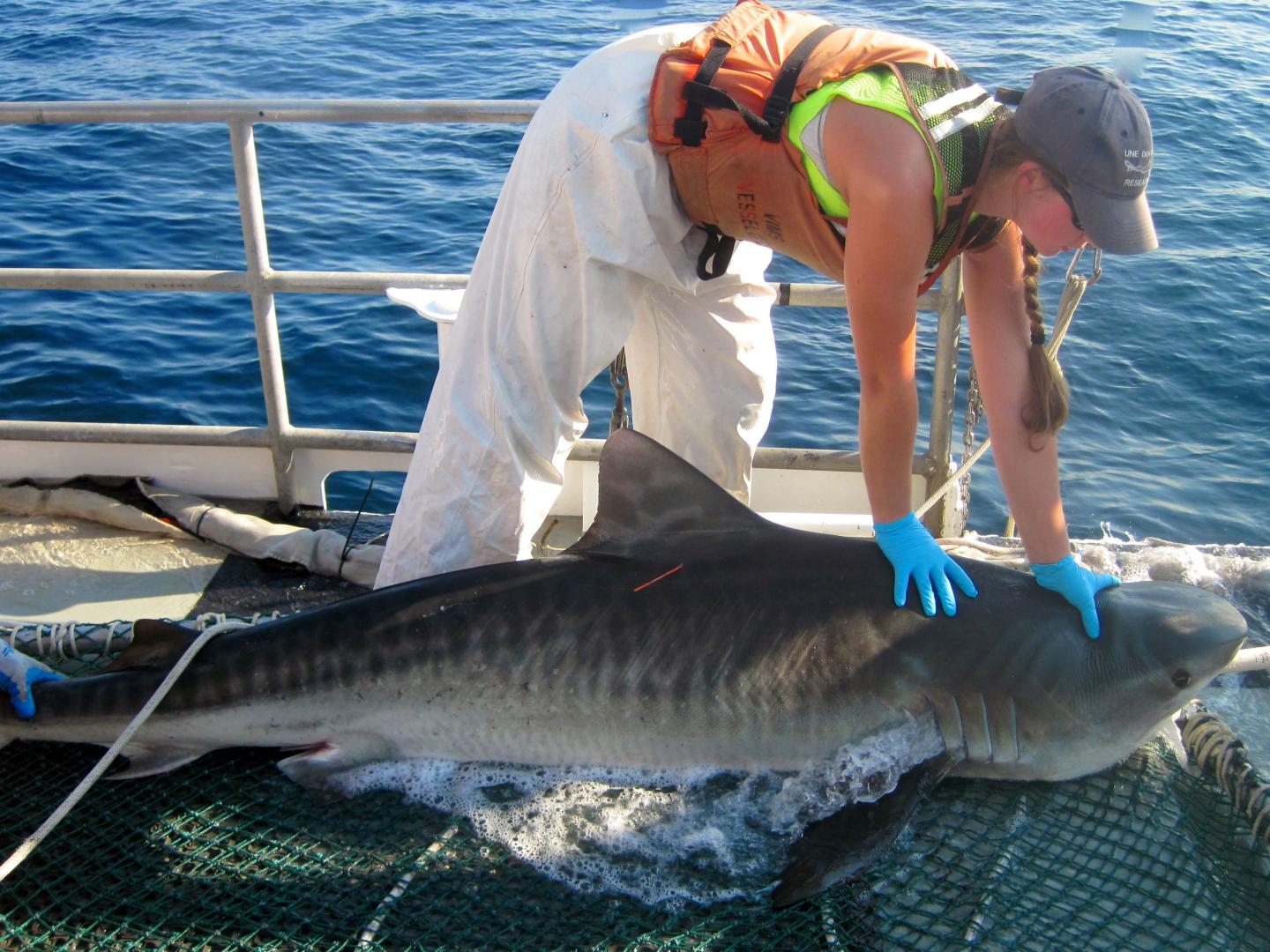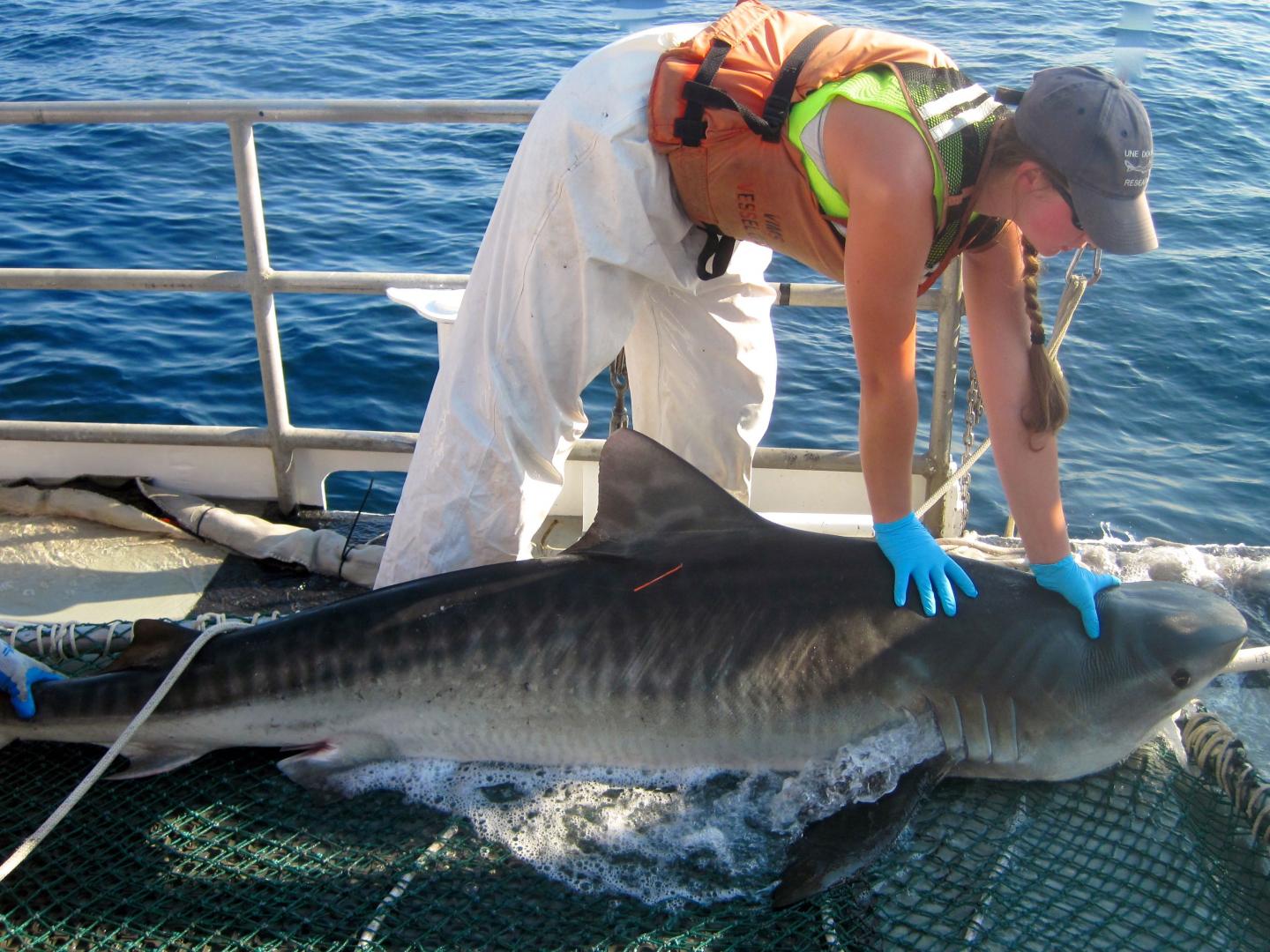
Credit: VIMS
A new analysis of population trends among coastal sharks of the southeast U.S. shows that all but one of the seven species studied are increasing in abundance. The gains follow enactment of fishing regulations in the early 1990s after decades of declining shark numbers.
Scientists estimate that over-fishing of sharks along the southeast U.S. coast–which began in earnest following the release of Jaws in 1975 and continued through the 1980s–had reduced populations by 60-99% compared to un-fished levels. In response, NOAA's National Marine Fishery Service in 1993 enacted a management plan for shark fisheries that limited both commercial and recreational landings.
Now, says lead scientist Cassidy Peterson, a graduate student at William & Mary's Virginia Institute of Marine Science, "We've shown that after over two decades of management measures, coastal shark populations are finally starting to recover and reclaim their position as top predators, or regulators of their ecosystem. Our research suggests we can begin to shift away from the era of 'doom and gloom' regarding shark status in the United States."
Joining Peterson in the study, published in the latest issue of Fish and Fisheries, were VIMS professor Rob Latour, Carolyn Belcher of the Georgia Department of Natural Resources, Dana Bethea and William Driggers III of NOAA's Southeast Fisheries Science Center, and Bryan Frazier of the South Carolina Department of Natural Resources.
The researchers say their study–based on modeling of combined data from six different scientific surveys conducted along the US East Coast and in the Gulf of Mexico between 1975 and 2014–provides a more accurate and optimistic outlook than previous studies based on commercial fishery landings or surveys in a single location.
"Data from shark long-lining operations or shark bycatch can be suspect," says Peterson, "because what looks like a change in abundance might instead be due to changes in fishing gear, target species, market forces, or other factors."
Research surveys are scientifically designed to remove these biases. Survey crews purposefully sample a random grid rather than visiting known shark hot spots, and strive to use the exact same gear and methods year after year to ensure consistency in their results.
But even with these safeguards, data from a single survey often aren't enough to capture population trends for an entire shark species, whose members may occupy diverse habitats and migrate to different and far-flung areas depending on age and sex.
"Because many shark species undergo vast migrations and have complex life cycles," says Peterson, "it's not uncommon for results from different surveys to conflict. Producing an estimate of total abundance requires combining data from different surveys–sometimes from several states or even countries–and applying intricate stock-assessment models."
For the current study, the scientists combined data from six different shark surveys: the VIMS Longline Survey, the SouthEast Area Monitoring and Assessment Program's South Atlantic Coastal Trawl Survey, the South Carolina Coastal Longline Survey, the Georgia Red Drum Longline Survey, the Southeast Fisheries Science Center's Longline Survey, and the Gulf of Mexico Shark Pupping and Nursery Area Gillnet Survey.
"Our study represents the most comprehensive analysis of patterns in abundance ever conducted for shark species common to our area and the Southeast coast," says Latour, who directs the longline survey at VIMS. Established in 1973, it is the world's longest running fishery independent monitoring program for sharks, skates, and rays.
By pooling and modeling data from all six surveys, the researchers were able to estimate population trends for seven of the region's most common coastal species: the large-bodied sandbar, blacktip, spinner, and tiger sharks, and the smaller Atlantic sharpnose, blacknose, and bonnethead sharks.
The results of the analysis were clear, says Peterson. "All the large-bodied sharks showed similar population trends, with decreasing abundance from the mid-1970s to the early 1990s, then a multi-year period of low abundance, and recent indications of recovery from past exploitation."
All but one population of small coastal sharks also increased in abundance. The exception was blacknose sharks in the Gulf of Mexico, which decreased from the onset of records in 1989 until the study's end in 2014. This species is known to be susceptible to by-catch within the trawl fishery for Gulf shrimp. The blacknose population along the Atlantic coast of the southeast U.S. actually increased during the same period.
The overall population trends make biological sense, says Latour. "The large-bodied species saw the greatest initial declines, both because they were highly sought by anglers, and because they mature late and produce relatively few pups. Their slow growth rate also helps explain the pause in their recovery following the onset of fishing regulations in the early 1990s." The smaller shark species, whose higher growth rates make them less susceptible to fishing pressure, saw lesser declines and more rapid recoveries.
The team also found a correlation between shark numbers and both fishing pressure and large-scale climatic patterns.
###
Funding for the study was provided by NOAA Fisheries, the NMFS Highly Migratory Species Office, the Atlantic States Marine Fisheries Commission, the South Carolina Saltwater Recreational Fishing License Funds, and the Federal Assistance for Interjurisdictional Fisheries Program.
Media Contact
David Malmquist
[email protected]
804-684-7011
@VIMS_News
http://www.vims.edu
############
Story Source: Materials provided by Scienmag





